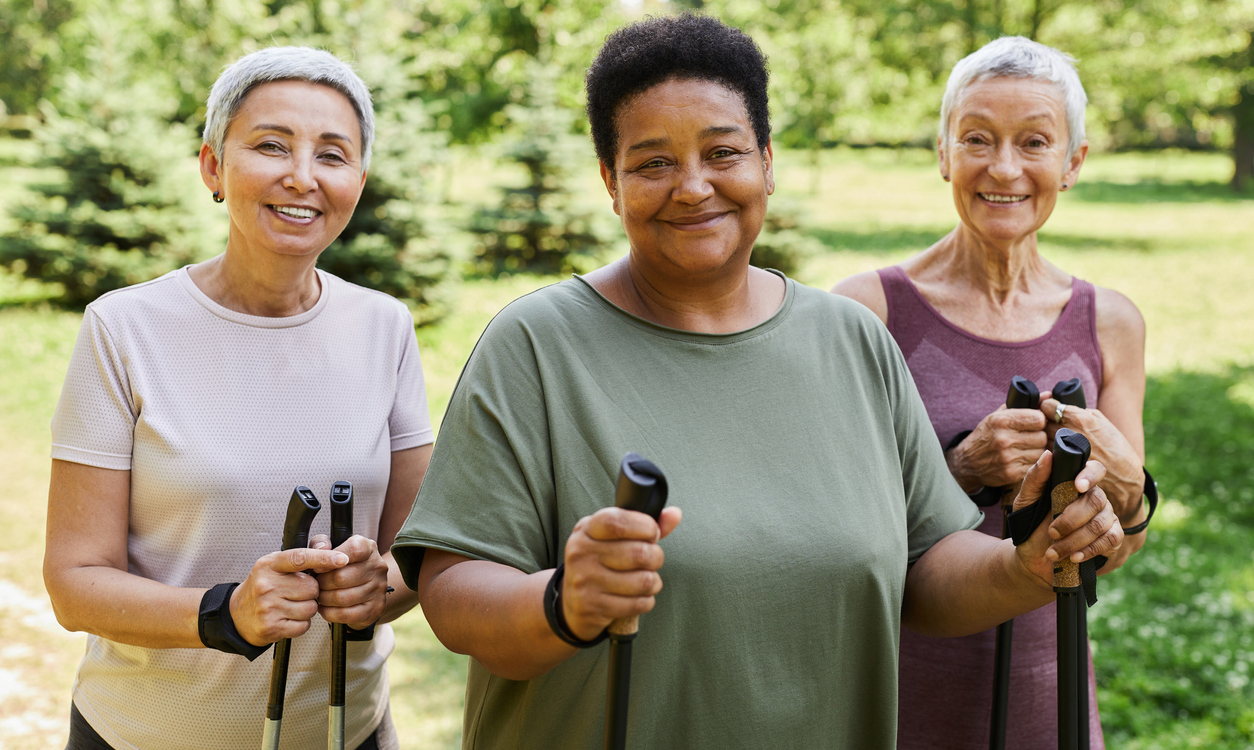Falls Prevention: From Awareness to Action

There is a difference between being aware of something (e.g., the knowledge or perception of an issue) and acting on that knowledge. Just because we “know” something (e.g., the importance of physical activity) doesn’t always mean we follow an exercise program.
In the case of falls, knowledge is important for everyone in the community. Once we have the knowledge, then we can take steps towards health and wellness.

Over 10,000 people in the United States turn 65 every day. The number of falls and fall injuries will increase as the population of older adults grows. Death rates from falls have increased about 30% in the last decade. For more information, click on the image above.
Did you know that, according to the Centers for Disease Control, more than one in four older adults fall each year? An older adult falls every second of every day. In adults aged 65 and older, most injuries, both fatal and non-fatal, are caused by falls. Serious injuries occur in nearly 20 percent of falls. Falls are the leading cause of traumatic brain injuries and hip fractures among older adults. In 2018, 32,731 older adults in the United States died as a result of a fall.
Often, after a fall, an older adult may develop a fear of falling again, and thereby decrease their physical activity. With a decrease in physical functioning, this can lead to dependence and increased risk of future falls.
Falls vary in scope and severity. For instance, a person might fall several times and not have any serious injury. On the other hand, one serious fall could lead to permanent disability, or even death.
The goal of a falls prevention and balance program is to decrease future falls and improve functional mobility, safety, and quality of life. Rehabilitation for those at risk of falling may include training for static and dynamic balance, gait, dual-task activity, and cognition that may be accomplished with virtual reality.
Many people tell us that they know—intellectually—about the importance of health and wellness, as it relates to fall prevention; however, they share that it’s taking the first step to balance and strength exercises that seems to be the biggest hurdle.

Jessica (Kele) Murdin, PT, MPT
There are a lot of evidence-based programs; however, one that is especially promising is called Otago. For more information, I talked with Jessica (Kele) Murdin, PT, MPT, an award-winning, nationally recognized Physical Therapist (PT) about Otago. Kele is a Clinical Knowledge Broker and Board-Certified Clinical Specialist in Geriatric Physical Therapy. She is also a Certified Exercise Expert for Aging Adults and Geriatric Trained Certification and serves as the secretary for the King County Fall Prevention Coalition.
Kele, what is Otago and why is it important?
Otago is a series of 17 strength and balance exercises that can be performed at the right challenge at home. When directed by a registered physical therapist over time, Otago has been shown to reduce falls for frail older adults by 35 percent and 40 percent.
The Otago program was created, implemented, and validated in New Zealand in the late 1990s. In 2010, with support from the Centers for Disease Control, the program was adopted for the healthcare system in the United States.
Traditionally, Otago was prescribed by a licensed clinician, a Physical Therapist, in the home as a home exercise program, to maintain fidelity with the licensed program. Since 2010, there has been a preponderance of evidence indicating the factors like where the exercises are performed (home, community center, clinic, etc.) and who teaches them (fitness provider, lay person, physical therapist, etc.) did NOT impact the outcomes. What matters is doing the exercises at the right challenge, over time is what clearly impacts the outcomes received from this program.
So, how do you know the right challenge?
That’s where a physical therapist can be helpful. Often this happens when establishing a plan of care. A doctor will write a prescription for physical therapy. In developing a plan of care, the therapist will assess fall risk and prescribe exercises pulled from the Otago program for home exercise.
Once therapy has been completed, there are online videos that can be used—subscription-based apps that use Otago—and group programs to continue performing the Otago exercises.
A key component is ongoing fall risk assessment to ensure the appropriate challenge of the exercises and ensure safety. These exercises have been created to challenge balance; therefore, they need to be prescribed at the right level, the level that is safe for each person. That is where the fall risk assessments come into play. Based on fall risk scores, the appropriate challenge level is determined, often by a physical therapist.
What makes up the Otago exercise program?
The exercise program has four parts:
- Warm up (neck and back)
- Strength (individual muscle strengthening—thighs, hips, and calves)
- Strength and Balance (functional strengthening—lower leg and static balance
- Walking Balance (balance with walking tasks)
In addition to the exercises, a walking program is encouraged. The target is for moderate level walking.
Key components:
- Dosage: Target 30 minutes of the strength and balance exercises, three times per week, and 30 minutes of the walking program, also three times per week.
Research shows that, to get the maximal fall reduction benefits from exercise, the participant needs to perform 50 hours of exercise. Adhering to the above recommendation will keep you on pace for meeting this target in four months. It is highly recommended to maintain this level of activity consistently, even after meeting the 50-hour target, to sustain these benefits and to reduce the risk of many chronic diseases.
- Progression: These exercises should feel challenging. The last two of the 10 repetitions should be hard. And to sustain that, it is very likely you will need to add weight as you get stronger.
For balance exercises, the level of challenge can increase by decreasing 1) the amount of support from your hands, and 2) the length of time you hold the balance challenge. Expect to add weight and increase the balance challenge frequently as you move through this program. Meeting that challenge is key to getting the maximal fall reduction benefits!
Remember, it is highly recommended this program be overseen by a therapist due to the challenge level. Ask your doctor for a prescription or find a Group Otago program near you!
 Contributor Mary Pat O’Leary, RN, BSN is a senior planner with Aging and Disability Services, the Area Agency on Aging for Seattle and King County.
Contributor Mary Pat O’Leary, RN, BSN is a senior planner with Aging and Disability Services, the Area Agency on Aging for Seattle and King County.
This article appeared in the September 2023 issue of AgeWise King County.
![Aging & Disability Services for Seattle & King County [logo]](https://www.agingkingcounty.org/wp-content/themes/sads/images/seattle-ads-logo.png)